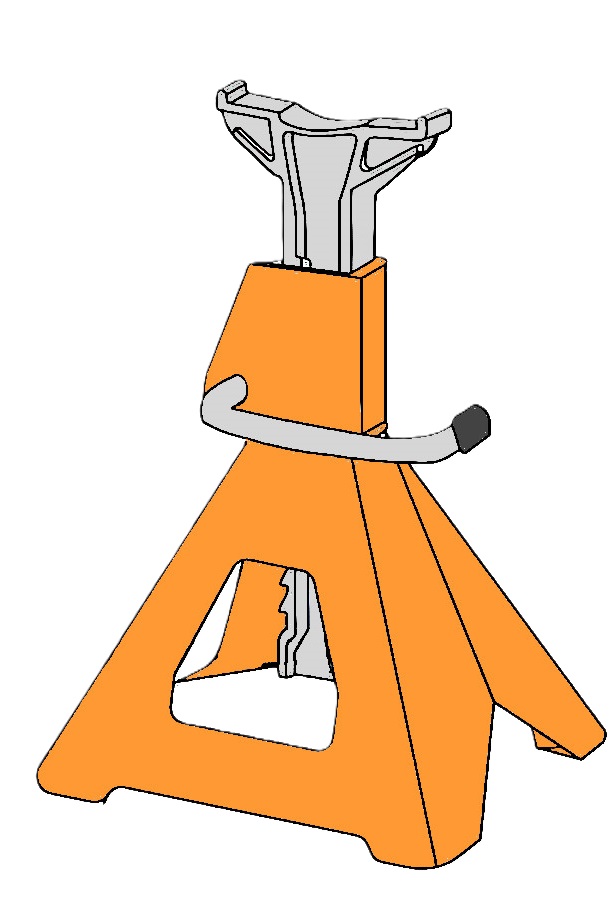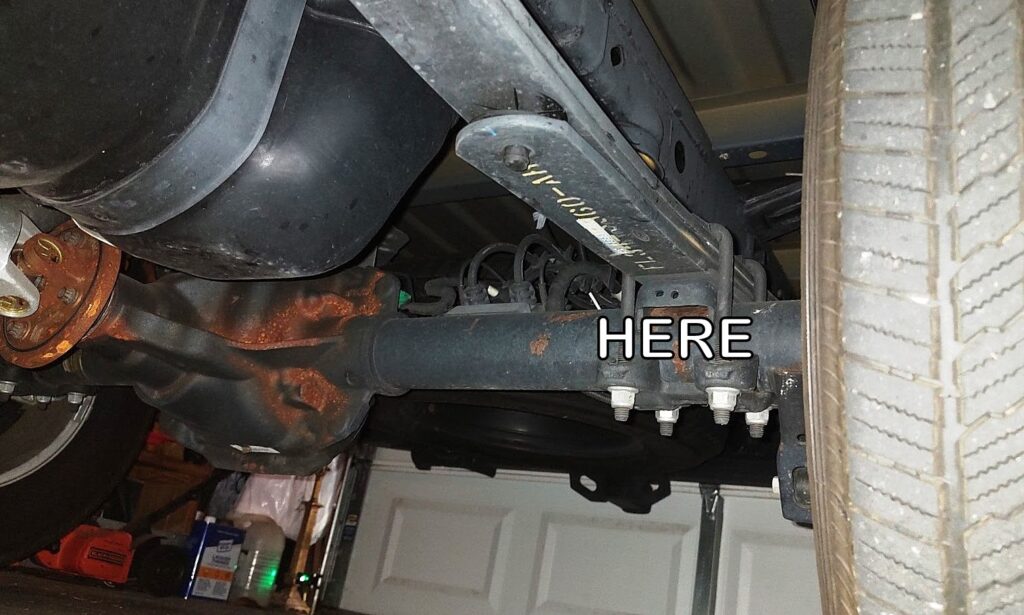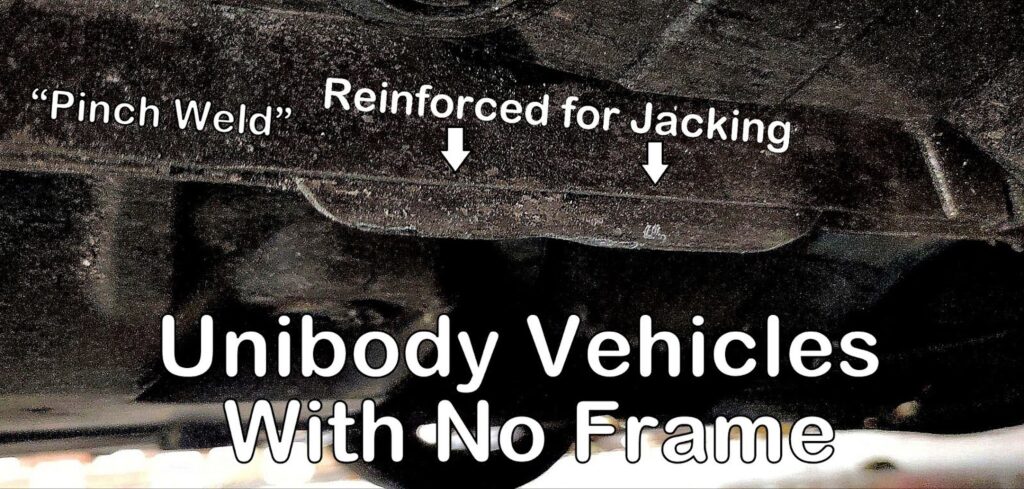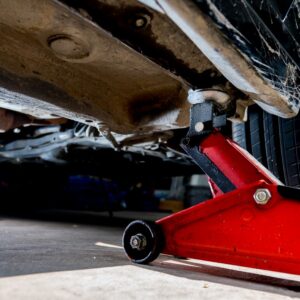Whether you need to repair, replace a part, or simply inspect something under your vehicle, jack stands can make the job a lot safer than just working under the car while it is being supported by a hydraulic jack. Of course, it’s important that you know how to properly set them up.
According to the National Highway Traffic Safety Administration (NHTSA), it’s estimated that over 4,500 people get injured due to jack failures. Most of them involve the vehicle slipping or the jack failing.
As such, it’s important to know the proper steps when using a floor jack and setting up your jack stands to support the vehicle rather than trusting the hydraulic jack.
How to Safely Use Car Jack Stands
To use a jack stand without risk of it failing, you’ll need a jack and wheel chocks or wooden boards.
If you’re unfamiliar, wheel chocks are wedges, often made of plastic, wood, or rubber, that are placed against the wheels to prevent the car from moving forward or backward. This ensures you can safely work on your vehicle without the risk of it rolling.
Once you have everything you need, follow the steps below:
Ask for Assistance (Optional)
An extra pair of hands is always helpful when working on your vehicle. A friend could help you spot things you might have missed and hand you the tools needed while you’re working on your car.
But since most of us have only two hands and might not have a friend to help, we can still get the job done by ourselves. We just need to double check everything and be very careful.

Find a Flat Surface
You need to find a perfectly flat and level surface to jack up your vehicle. The slightest of slopes could result in your car rolling or shifting out of place when the tires are lifted.
Caution: Keep in mind: jack stands won’t work well on a sloped surface. Don’t use jack stands on asphalt on a hot summer day without putting a piece of plywood larger than the base of the stand underneath the jack stand. A sinking jack stand can cause the vehicle to shift and fall unexpectedly. Don’t ever use a jack stand on sand, dirt, or gravel; always concrete that is flat and level.
Once you find a safe spot, put your vehicle in park if you’re driving an automatic or first gear if you own a manual transmission car to keep it still. If you’re not working on the rear brakes, set the park brake as well.
Place the Wheel Chocks
Put the wheel chocks around the grounded wheels to ensure your car doesn’t move forward or backward. If you’re on level ground, something as simple as a brick or a four-by-four block in front of and behind two of the wheels will do the job.
Place the Floor Jack at the Designated Jack Points
Before lifting your vehicle, check for the jacking points.



Once you locate the jack points, place the jack under the lifting point and raise the vehicle, and then put a stand as near the jack as you can on the pinch weld, axle tube, or frame (see illustrations). Fully lower the hydraulic jack once the car is pressed against the stands.
Ensure Stability
Push the car to verify the stands are stable in their place. The stands must be at the same height to ensure the vehicle is level. Once you’ve confirmed that the setup is stable and level, you should be able to work safely under your car.
Lower the Car
Lower the car. Keep lowering until the nearest wheel makes contact with the ground. Repeat for all OEM lift points.
How to Remove Car Jack Stands
To remove your vehicle from the jack stands, follow the steps below:
Raise Your Vehicle off the Jack Stands
Roll the floor jack underneath the vehicle until it’s lined up with the lift point you used. Raise it until the stand is loose enough to unlock the jack stand lever so the ratchet bar can fall free.
Pull the Jack Stand
Slide the jack out without going underneath the vehicle.
Lower the Jack
Turn the lever on the floor jack counterclockwise to lower the vehicle. Once the tires hit the ground, roll your jack out from under the car. into it.
Lift the Vehicle
Place your jack under the lift points and raise your vehicle on each side if you need to remove other jack stands. Remove both jack stands from the front first before removing the ones in the back if your vehicle is jacked off the ground.
Frequently Asked Questions About Car Jack Stands
Here are some of the frequently asked questions about jack stands:
Where Should Car Jack Stands Be Placed?
It’s recommended to place the jack stands directly underneath the jack points. Your owner’s manual should have a more detailed answer to their location. It’s dangerous to place the jack stand anywhere else, as the car could roll over and injure/damage someone/something.
Why Use Car Jack Stands?
Jack stands are useful when working on your vehicle because they provide a stable and secure platform to keep the car lifted in the air to prevent it from falling.
Are Car Jack Stands Safe?
A properly set up jack stand is safe to use. To make sure it’s stable, give your car a slight shake to ensure stability.
Can You Put Car Jack Stands on the Axle?
It’s not recommended to put the jack stands on the axle, as it’s not designed to hold the weight of the vehicle. As mentioned, the jack points are the best places to put the jack stands.
What Car Jack Stand Do I Need?
Find a jack that can support your vehicle’s weight. If your car weighs 2,500 pounds, it’s best to look for a two-ton jack stand (too much is better than too little capacity). The owner’s manual should also specify how much your vehicle weighs.
Steer clear of jack stands have been recalled due to safety concerns and reported injuries. For example, Harbor Freight Tools recalled over 1.7 million Pittsburgh Automotive 3 Ton and 6 Ton Heavy Duty Steel Jack Stands because they tend to collapse when used.
Where to Shop for Durable Jack Stands for At-Home Car Repair Tasks
Having durable jack stands can make all the difference when you’re dealing with at-home repair tasks, whether it’s rotating tires or inspecting underside components. Fail-proof jack stands aren’t hard to come by, especially here at CarParts.com. Our wide selection of DIY equipment is guaranteed to be tough and extremely reliable, so you can work on your daily driver with ease.
Start shopping by entering your vehicle’s specifications into our vehicle selector for a more personalized shopping experience. Our user-friendly website is easy to navigate, so you’re sure to find the parts you need as soon as possible, and you can check out after a few clicks. You can also use the search filters to find jack stands that are more suitable for your preferences in terms of price, quantity, brand, and more.
Stay within budget when you shop from us. All our products come with a low-price guarantee to help you get the best value for your money. Order now, and we’ll deliver your jack stands straight to your doorstep in as fast as two business days.
Don’t miss out on the best deals on the market, and shop with us today!
Any information provided on this Website is for informational purposes only and is not intended to replace consultation with a professional mechanic. The accuracy and timeliness of the information may change from the time of publication.







































